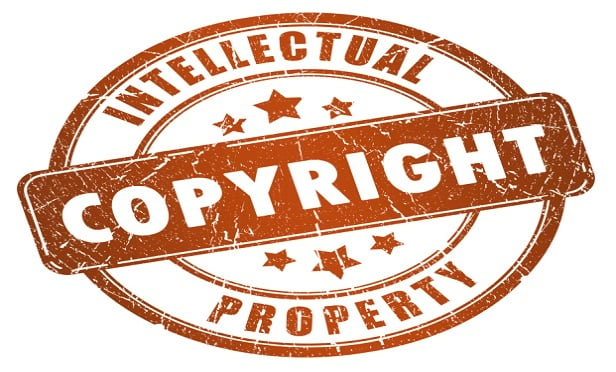Features

How Judges Are Interpreting Supreme Court's Copyright 'Registration' Ruling
In Fourth Estate Public Benefit Corp. v. Wall-Street.com LLC, the U.S. Supreme Court held that, under 17 U.S.C. §411(a), "registration occurs, and a copyright claimant may commence an infringement suit, when the Copyright Office registers a copyright" — that is, acts on a registration application, rather than when an applicant delivers the registration materials to the Copyright Office.
Features

What Would End of Film Studio Consent Decrees Mean?
In November, the DOJ asked a federal district court to terminate the Paramount Consent Decrees, a set of rules governing major film studios for the last 70 years. In effect, these rules prohibited movie studios from owning downstream movie theaters and banned a variety of vertical agreements, such as block booking — the practice of bundling multiple films into one theater license.
Features

Counsel Concerns: 3rd Circuit Decides Lawyers' Dispute over Video Game Litigation Client
A federal appeals court upheld the dismissal of a Philadelphia lawyer's suit alleging that Los Angeles litigation boutique Pierce Bainbridge Beck Price & Hecht acted in bad faith by failing to follow through with a $160,000 settlement in a dispute over attorney fees.
Features

IP Issues and Esports Athletes
A new esports-centric survey released by the law firm of Foley & Lardner projects that esports revenues will climb above the $1 billion mark this year. But the increased stakes and growing sophistication of the industry will likely not be without their headaches.
Features

Challenges to Evidence of Copyright Ownership
There has been a long-term debate over whether sound recordings can be copyright works made for hire. Sound recordings don't appear in the list of works for hire set out in §101 of the Copyright Act of 1976, though record labels argue recordings can be deemed so as a "compilation" or a "contribution to a collective work," per §101.
Features

Film and Music Cases Result in Different Outcomes for Default Judgment Motions
Non-payment of monies is an all-too-common complaint in the entertainment industry, with frustrated plaintiffs in many cases seeking default judgments against defendants who fail to respond to lawsuits seeking payment. Two new Central District of California federal court decisions illustrate — after the judges sort through the factors for determining whether to grant a default judgment — how consideration of the amount of money at issue resulted in different outcomes on whether to enter a default judgment.
Features

Editor's Note
We sadly note the November passing of long-time Entertainment Law & Finance editorial board member Jay Rosenthal.
Features

Photo Cases Test Copyright Law and Embedded Tweets
A New Yorker who settled a copyright lawsuit against several news outlets over a photo he took of star quarterback Tom Brady and Boston Celtics manager Danny Ainge has struck again. This time he's suing a radio station owner in Florida federal courts in a case that could test the boundaries of an emerging area of copyright law, raising major questions about how media companies incorporate social media posts into online stories.
Features

A Primer for Forming Loan-Out Corporations
In the entertainment industry, it can take years for actors, musicians and others to reach a point where their efforts begin bringing in a notable return. If and when these types of clients begin to make a consistently significant income, one method that deserves consideration for protecting the hard-earned pay is to organize a loan-out corporation.
Need Help?
- Prefer an IP authenticated environment? Request a transition or call 800-756-8993.
- Need other assistance? email Customer Service or call 1-877-256-2472.
MOST POPULAR STORIES
- The DOJ's Corporate Enforcement Policy: One Year LaterThe DOJ's Criminal Division issued three declinations since the issuance of the revised CEP a year ago. Review of these cases gives insight into DOJ's implementation of the new policy in practice.Read More ›
- Surveys in Patent Infringement Litigation: The Next FrontierMost experienced intellectual property attorneys understand the significant role surveys play in trademark infringement and other Lanham Act cases, but relatively few are likely to have considered the use of such research in patent infringement matters. That could soon change in light of the recent admission of a survey into evidence in <i>Applera Corporation, et al. v. MJ Research, Inc., et al.</i>, No. 3:98cv1201 (D. Conn. Aug. 26, 2005). The survey evidence, which showed that 96% of the defendant's customers used its products to perform a patented process, was admitted as evidence in support of a claim of inducement to infringe. The court admitted the survey into evidence over various objections by the defendant, who had argued that the inducement claim could not be proven without the survey.Read More ›
- The DOJ's New Parameters for Evaluating Corporate Compliance ProgramsThe parameters set forth in the DOJ's memorandum have implications not only for the government's evaluation of compliance programs in the context of criminal charging decisions, but also for how defense counsel structure their conference-room advocacy seeking declinations or lesser sanctions in both criminal and civil investigations.Read More ›
- Use of Deferred Prosecution Agreements In White Collar InvestigationsThis article discusses the practical and policy reasons for the use of DPAs and NPAs in white-collar criminal investigations, and considers the NDAA's new reporting provision and its relationship with other efforts to enhance transparency in DOJ decision-making.Read More ›
- A Playbook for Disrupting Traditional CRMHere's the playbook for disruption: Take attorneys out of the equation. Stop building CRM that succeeds or fails on their shoulders. We need to shift the focus and, instead, build the technology from the ground up for the professionals who actually use it: marketing and business development.Read More ›
